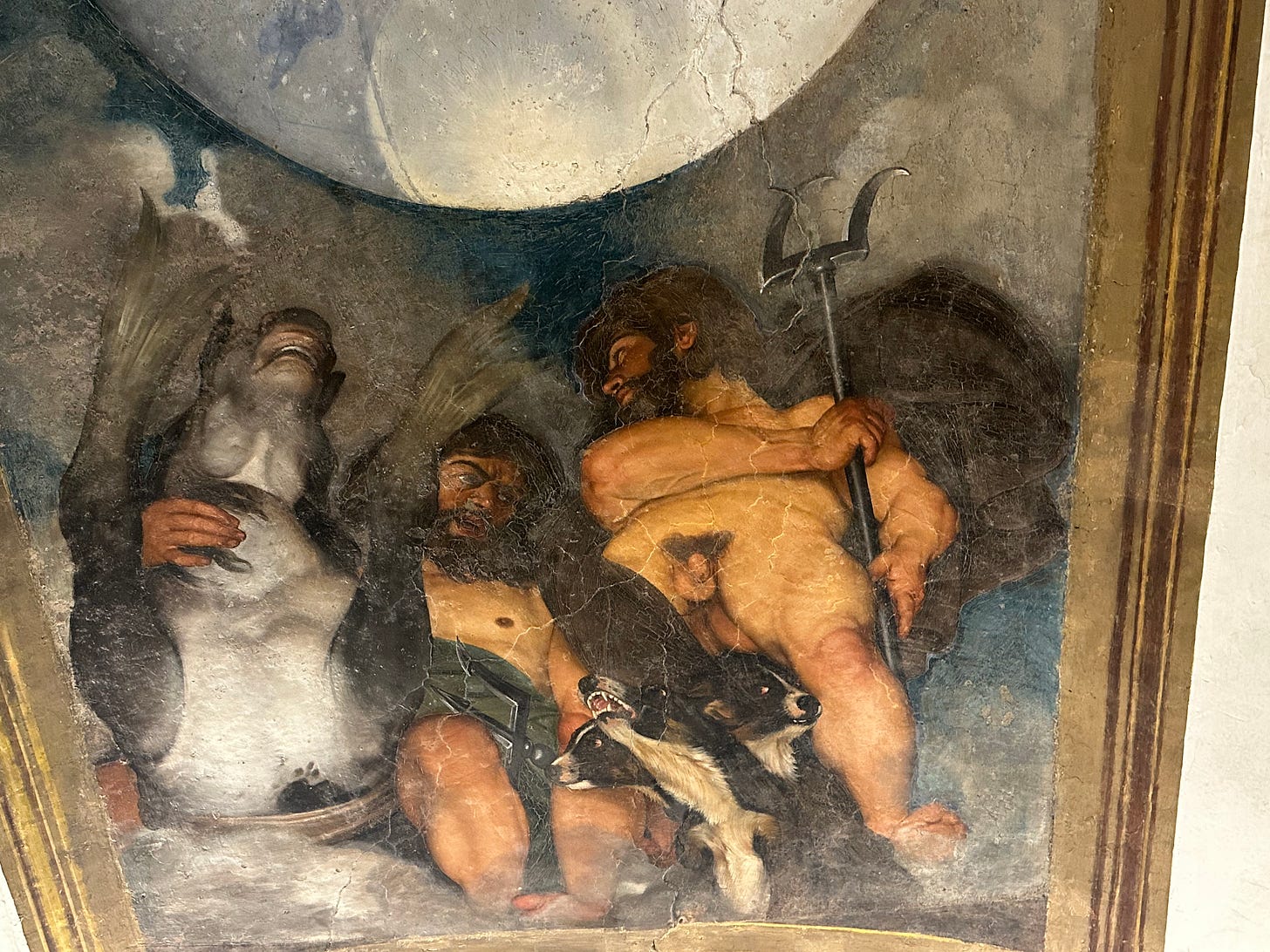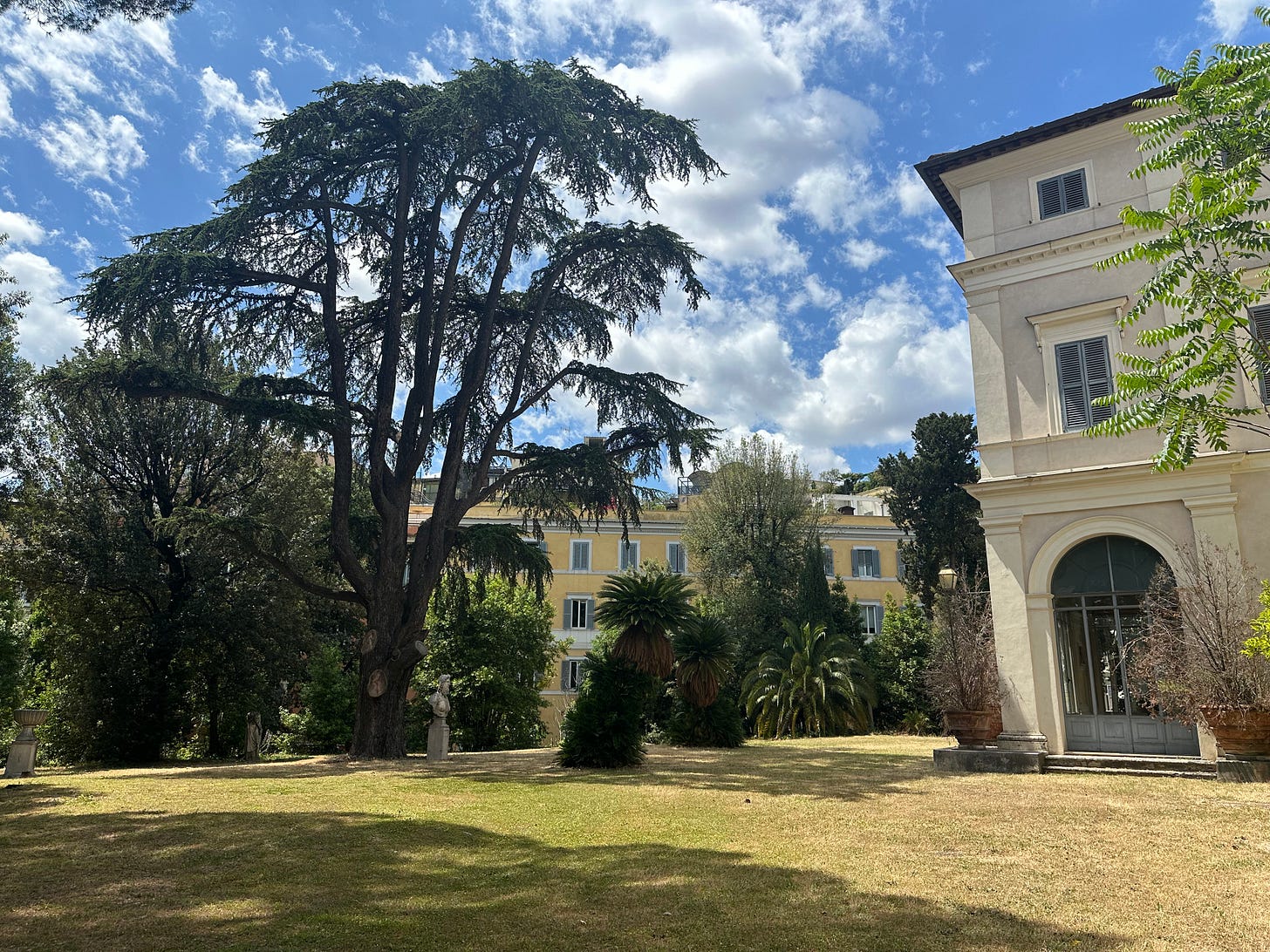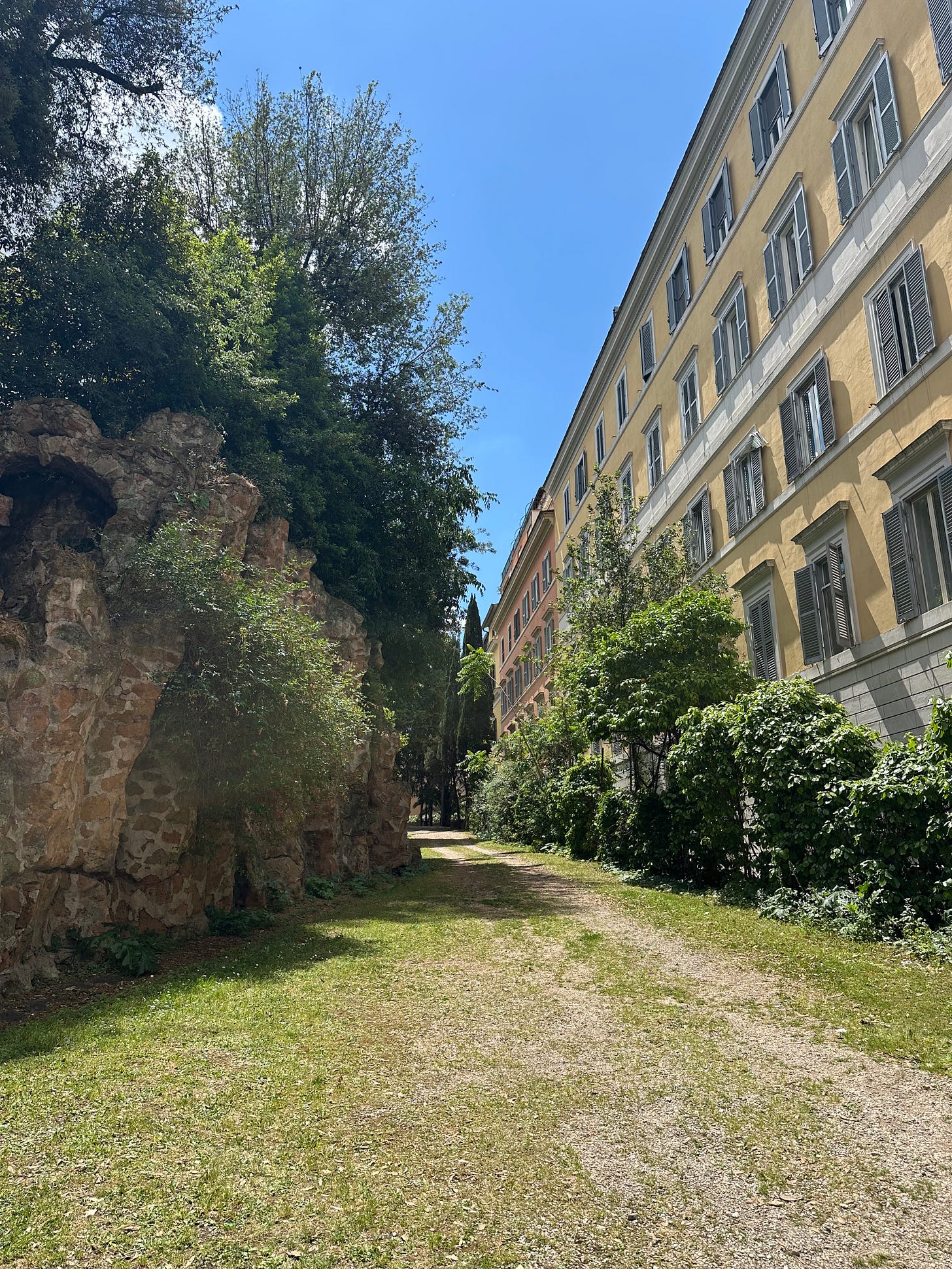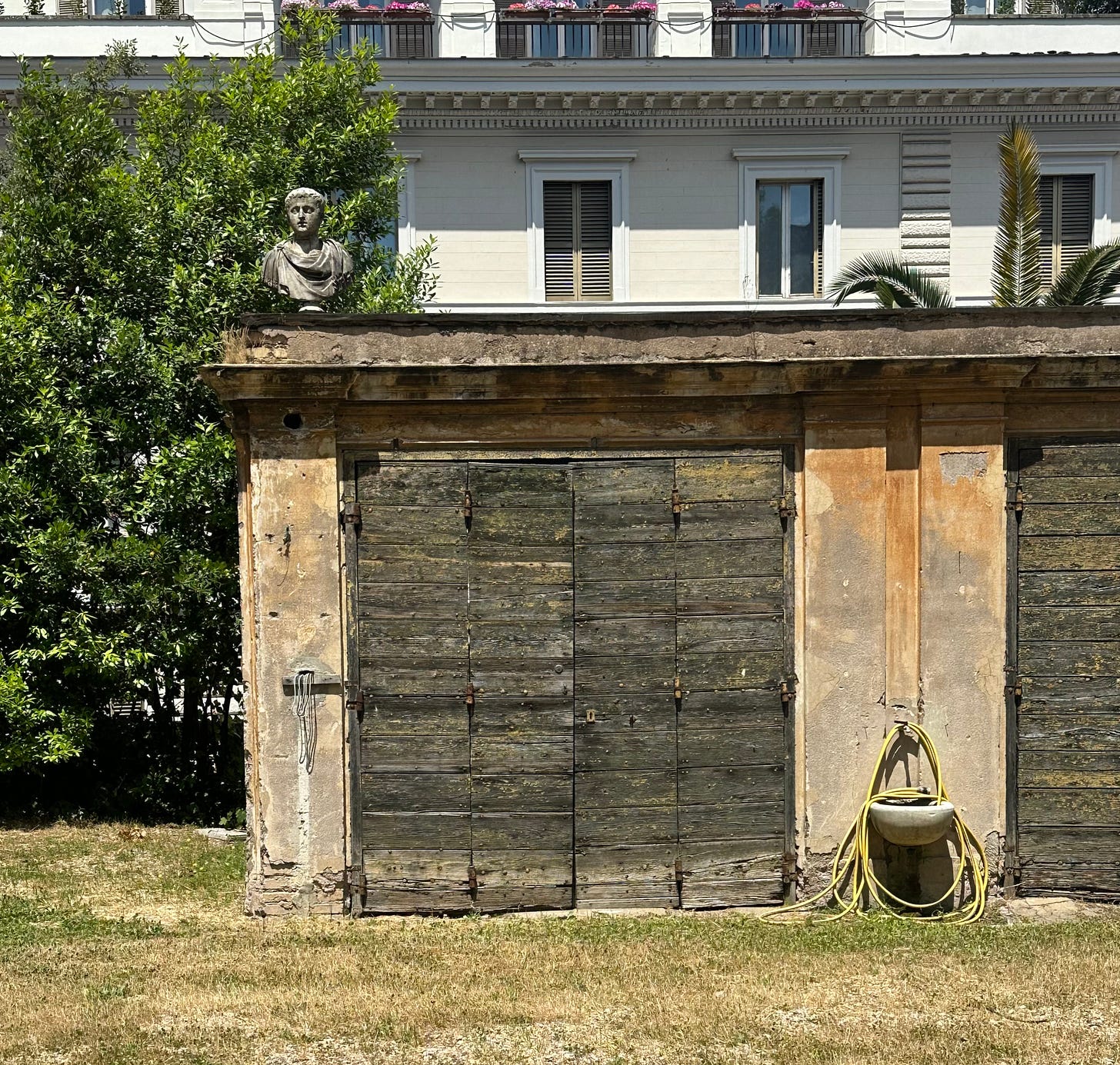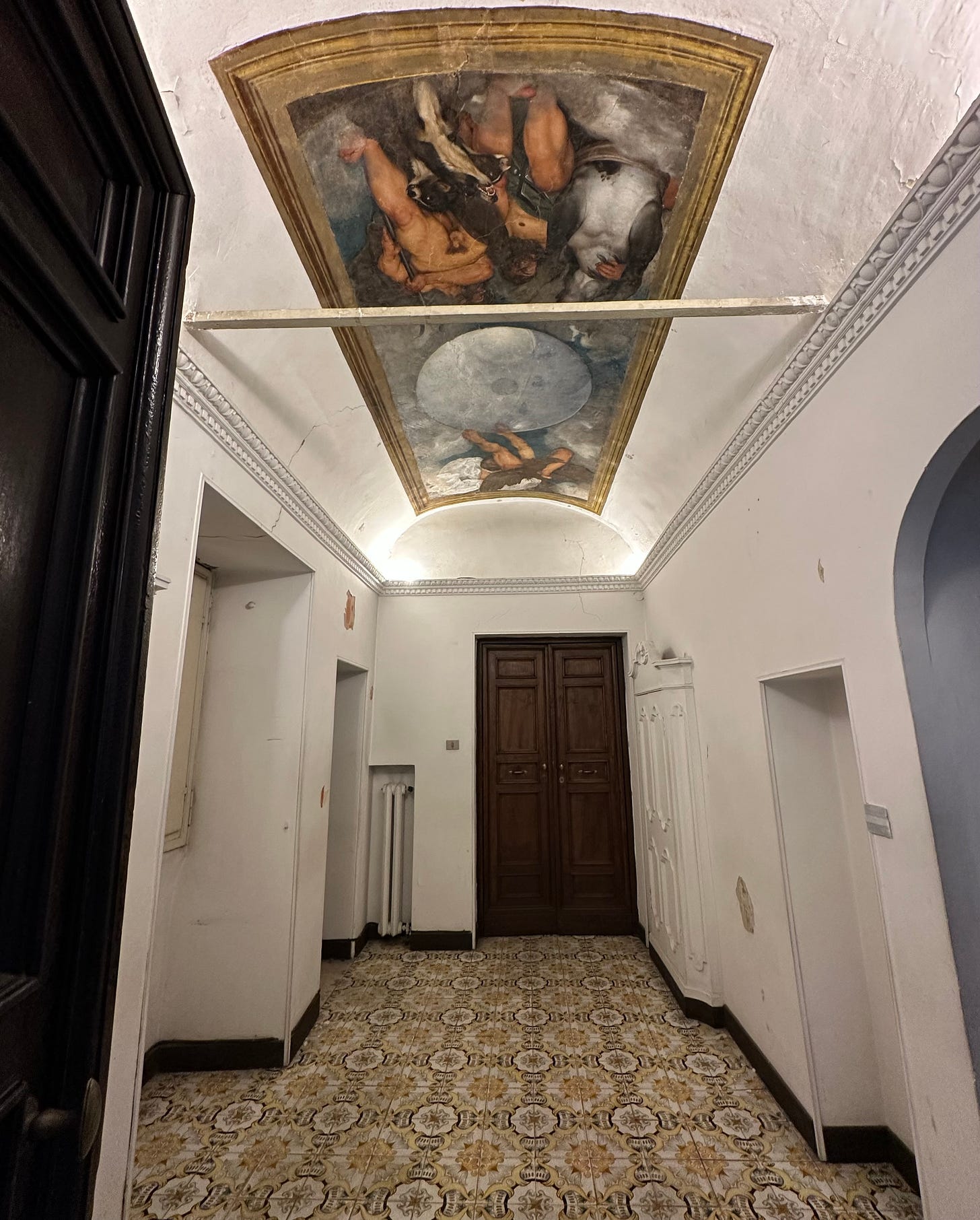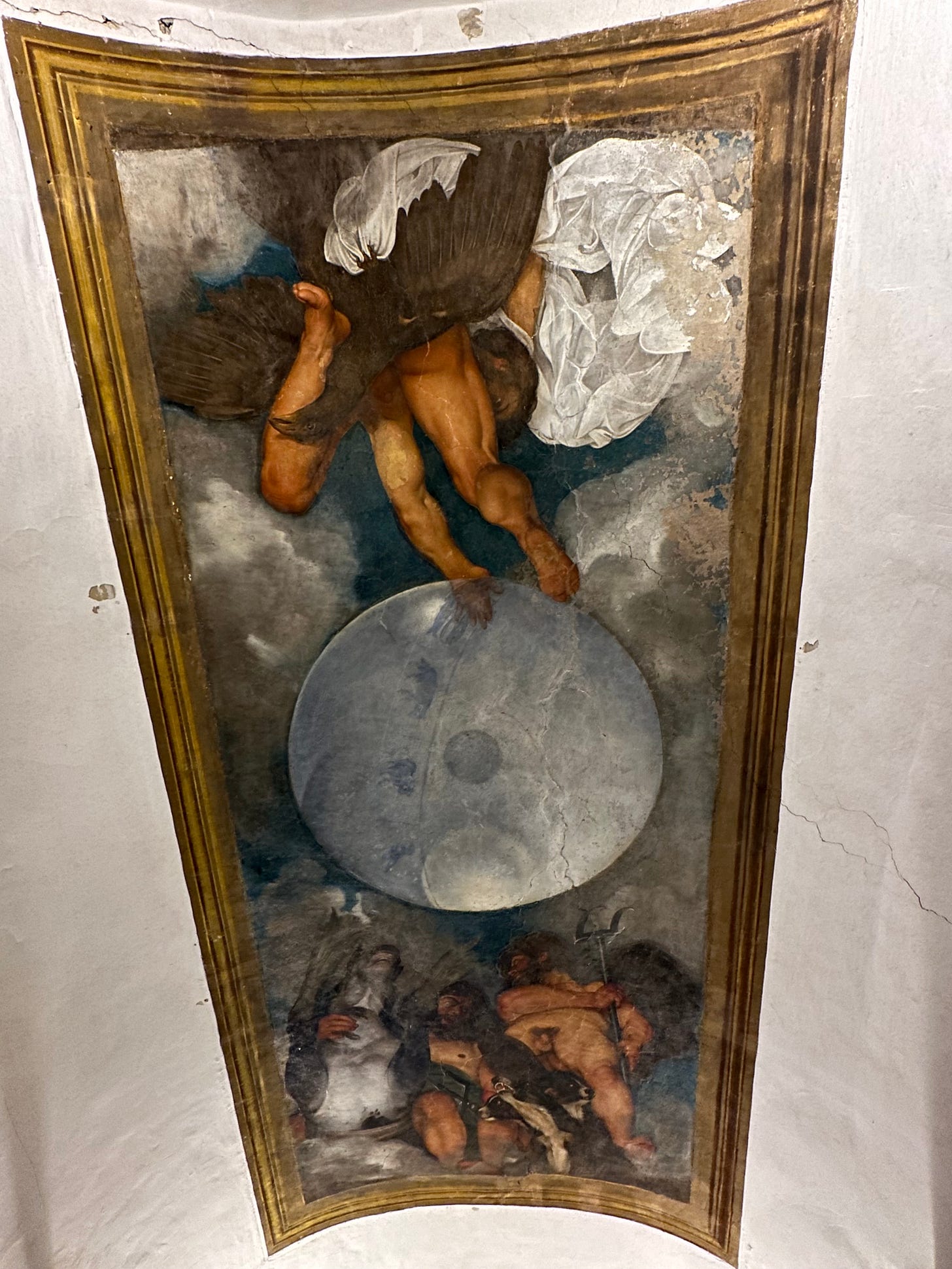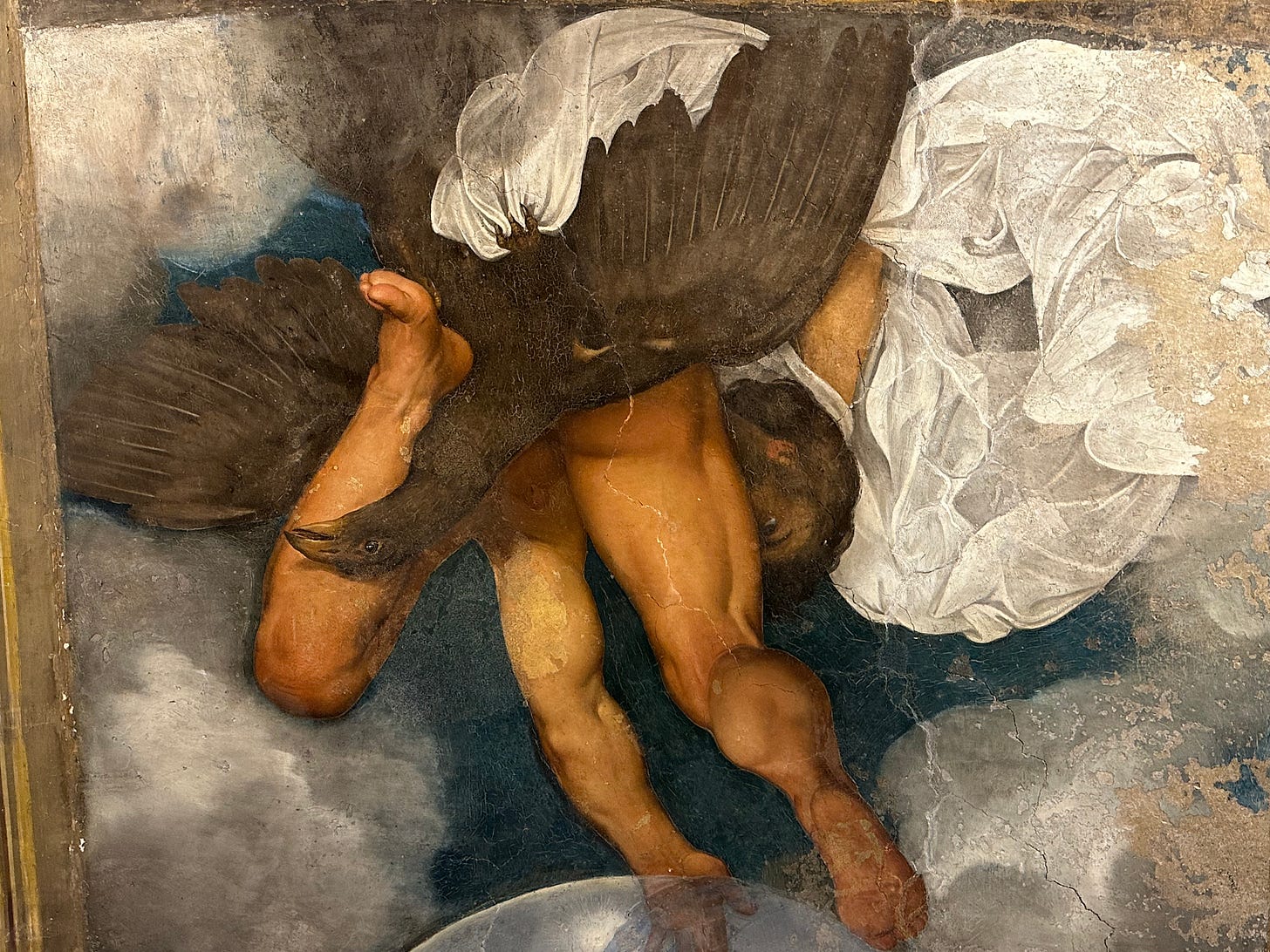Caravaggio's Jupiter, Neptune and Pluto at the Casino dell'Aurora Ludovisi. c.1597.
All photos taken by me on 18 May 2025
Just off via Veneto, behind high walls, is a garden redolent of the sort of exquisite, dusty, Gattopardian melancholy that I find irresistible. It is home to the Casino dell’Aurora, the last vestige of the once spectacular Villa Ludovisi, sadly not usually publicly accessible. Lurking on the first floor of this “little house” in a small, unlikely, and ever-so-slightly crumbling room is Caravaggio’s only immovable painting: Jupiter, Neptune and Pluto which was painted in oil directly on the plaster of the vaulted ceiling for Cardinal del Monte soon after Caravaggio’s arrival in Rome, perhaps as early as 1597.
The Villa Ludovisi was the last iteration of a series of grand gardens on this part of the Pincian Hill; the end of a thread which stretches back to antiquity, it was once among the grandest of the pleasure villas on the outskirts of the Baroque city. It was the pet project of Cardinal Ludovico Ludovisi, cardinale nipote (Cardinal Nephew, from whence the term “nepotism”) of Pope Gregory XV. In 1621, the cardinal bought the late Renaissance ville del Monte and Orsini and expanded further by buying up adjacent properties. The result was a vast park of over seventy acres (about thirty hectares) which occupied part of what had been in antiquity the, even vaster, Horti Sallustiani.
This ancient garden complex was dotted with pavilions and elaborate nymphaea, all decorated with exotic marbles, imported Greek statuary, and an insouciant abundance of fountains. The property stretched from the Pincian Hill to the Quirinal and had once belonged to Gaius Sallustius Crispus, a historian and politician of the late Republic whose avarice and corruption as governor in North Africa was legendary. He was spared from prosecution by his loyalty to Caesar, and after Caesar’s assassination Sallust—wisely; expediently—retreated to the Horti which had been funded by his nefarious career. He lived the last decade of his life there, writing histories of the Jugurthine War and the Catilinarian conspiracy.
Following Sallust’s death, as the Republic was in its death throes, his enviable estate passed to his homonymous heir (and great-nephew). Under the Julio-Claudians it became imperial property, undergoing multiple modifications and additions as the Empire first waxed and then, dramatically, waned. Imperial Rome hurtled towards its inexorable demise and the Gothic invasion of 410 led by Alaric caused much damage to the complex. The population of the urbs—long in decline—plummeted; what had once been the edge of the world’s largest city became a quarry for building materials amid farmland.
Historiographical tradition tells that, after Alaric and his marauding troops had first sacked the city, a thousand years of muddled violence followed; a millennium that we—with an impressively blithe fondness for sweeping taxonomy—term the “Middle Ages”. We imagine Rome eventually emerging, blinking, from the benighted quagmire as the sunlit uplands of the Renaissance beckoned. Grand ecclesiastical dynasties knowingly alluded to the glories of Rome’s ancient (and vehemently pre-Christian) past, and sixteenth and seventeenth century iterations of ancient horti—the ville del Monte (and later Ludovisi), Medici, and Borghese among them—were decorated with statuary which had once graced the gardens of Sallust.
The revival of the part of the gardens of Sallust which concerns us here begins with Cardinal Francesco Maria Bourbon del Monte Santa Maria, who bought part of what had once been the Horti Sallustiani in 1596.
Cardinal del Monte was the diplomatic representative of the Medici family in Rome, where he lived in the family’s grand Palazzo Madama (now the Senato della Repubblica, where I had a job teaching English to civil servants at the dawn of the millennium). There he held concerts, intellectual soirées, and collected art both ancient and modern; paintings by Titian (who had been one of del Monte’s godfathers) and the Portland Vase among them. It was in this context that he first came into contact with Caravaggio, fairly newly arrived in the city and in his mid twenties. About the time the Cardinal was buying his Villa just beyond the edge of the city, Caravaggio entered his household at Palazzo Madama, presumably living in servants’ quarters on the top floor. and perhaps as early as the following year del Monte had his protégé paint an allegory of alchemy on the ceiling of a small room, perhaps his study, at the house in the park.
The ancient—eclectic and malleable—proto-scientific discipline was a popular pursuit among gentlemen of Cardinal del Monte’s ilk, and an inventory upon his death refers (among other objects indicating a serious enthusiasm for alchemy) to a copper fornicello topped with a skull which plausibly corresponds to an athanor.
Keep reading with a 7-day free trial
Subscribe to Understanding Rome's Newsletter to keep reading this post and get 7 days of free access to the full post archives.


